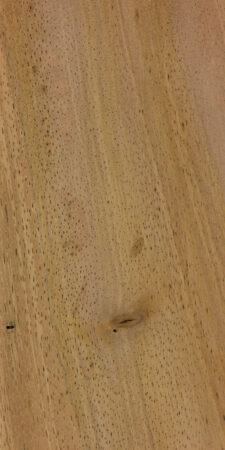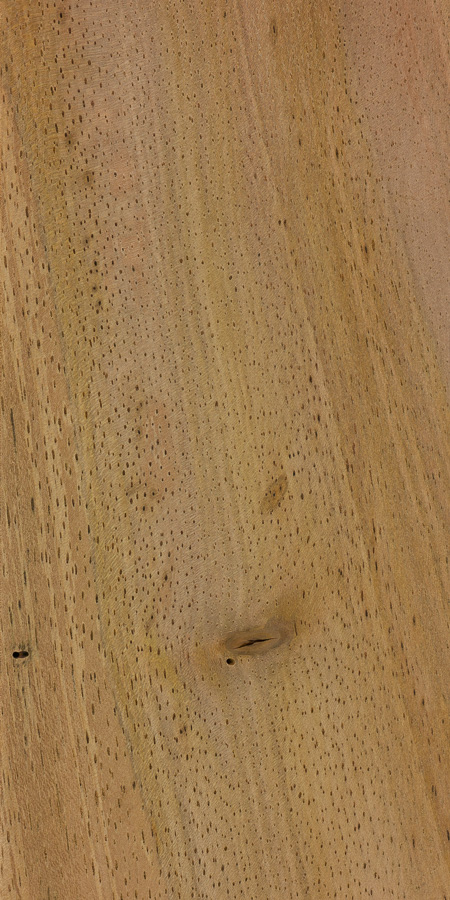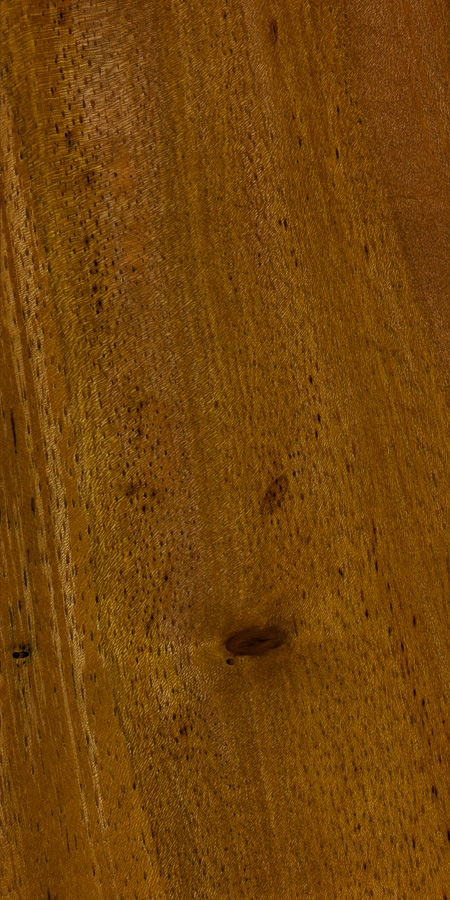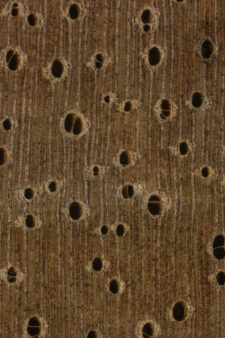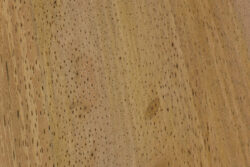Common Name(s): Espave, wild cashew
Scientific Name: Anacardium excelsum
Distribution: Central and South America (from Costa Rica south to Ecuador)
Tree Size: 75-150 ft (23-46 m) tall,
3-5 ft (1-1.5 m) trunk diameter
Average Dried Weight: 31.2 lbs/ft3 (500 kg/m3)
Specific Gravity (Basic, 12% MC): .41, .50
Janka Hardness: 470 lbf (2,090 N)
Modulus of Rupture: 9,060 lbf/in2 (62.5 MPa)
Elastic Modulus: 1,262,000 lbf/in2 (8.71 GPa)
Crushing Strength: 4,920 lbf/in2 (33.9 MPa)
Shrinkage: Radial: 2.8%, Tangential: 5.3%,
Volumetric: 8.5%, T/R Ratio: 1.9
Color/Appearance: Heartwood is golden brown, sometimes with a yellow or green hue, darkening to reddish brown with age. Wide, lighter-colored sapwood ranges from gray to light pink. Quartersawn surfaces have a ribbon-stripe appearance due to interlocked grain.
Grain/Texture: Grain is interlocked. With a medium to coarse texture and good natural luster.
Rot Resistance: Rated as moderately durable to non-durable; poor insect resistance.
Workability: Generally easy to work, though planing and sanding can be problematic because of the interlocked grain and low density, causing tearout and/or fuzzy surfaces. Despite low shrinkage rates, checking and warpage can occur if not initially dried with care. Glues, stains, and finishes well.
Odor: No characteristic odor.
Allergies/Toxicity: Although severe reactions are quite uncommon, espave has been reported to cause skin and respiratory irritation, as well as asthma-like symptoms. See the articles Wood Allergies and Toxicity and Wood Dust Safety for more information.
Pricing/Availability: Not commonly exported internationally. Expect prices to be moderate within its natural range. Decorative veneer with ribbon-stripe figure may be more expensive.
Sustainability: This wood species is not listed in the CITES Appendices or on the IUCN Red List of Threatened Species.
Common Uses: Veneer, plywood, furniture, boxes/crates, and utility lumber.
Comments: In lumber form, this species is traded under the name espave, though it’s commonly called wild cashew in tree form. Espave is a close relative of the true cashew tree (Anacardium occidentale) yielding the popular edible nut.
Images: Drag the slider up/down to toggle between raw and finished wood.
Identification: See the article on Hardwood Anatomy for definitions of endgrain features.
Porosity: diffuse porous
Arrangement: solitary and radial multiples
Vessels: large to very large, few to very few
Parenchyma: vasicentric and lozenge
Rays: narrow; normal spacing
Lookalikes/Substitutes: None.
Notes: None.
Related Content:

